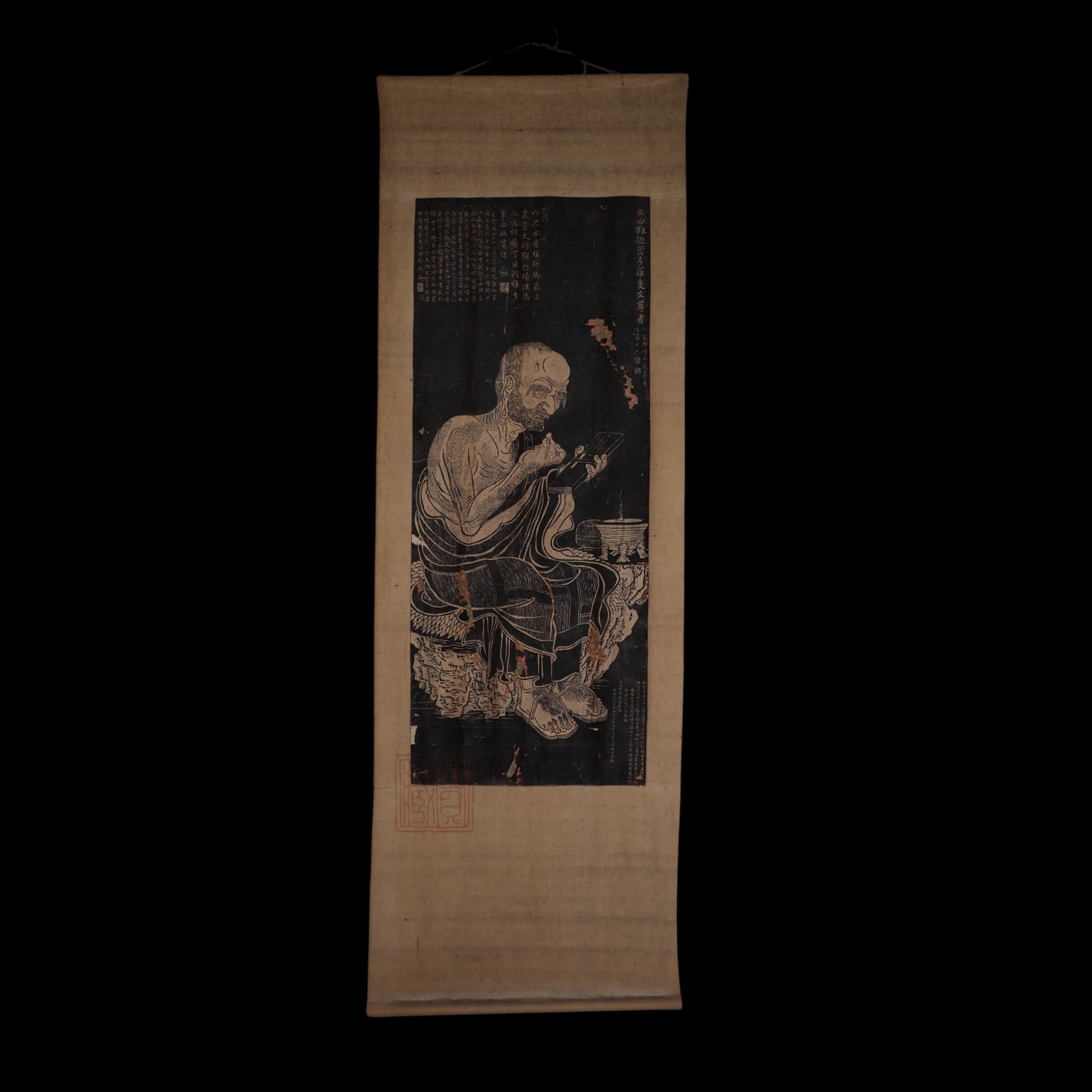Shambhala Treasures
Qing Dynasty Qianlong Period Guanxiu 4th Luohan Rubbing 清乾隆年間《十六羅漢應真像拓片》之第四羅漢難提密多羅慶友尊者
Qing Dynasty Qianlong Period Guanxiu 4th Luohan Rubbing 清乾隆年間《十六羅漢應真像拓片》之第四羅漢難提密多羅慶友尊者
Couldn't load pickup availability
These precious rubbings were originally tribute gifts from China, brought to Sikkim in the early 17th century by Janggya Hutuktu (章嘉活佛) and presented to King Phuntsog Namgyal II. During the same period, other rubbings of the Sixteen Arhats were also gifted to the royal family of neighboring Bhutan. These historical treasures have since been carefully preserved and passed down through generations, ultimately coming into the hands of our family today.
這些珍貴的拓片原為中國的進貢之物,由章嘉活佛(Janggya)於17世紀初帶至錫金,並獻給當時的國王彭措南嘉二世(Phuntsog Namgyal II)。同一時期,其他《十六羅漢應真像》拓片亦被進貢至鄰國不丹皇室。這些歷史珍寶自此由皇室珍藏,世代相傳,最終承襲至我們這一代家族之手。
If you are interested in this artwork and would like more information, please feel free to contact us via email at shambhalatreasures@gmail.com or WhatsApp at +85291375654
如果您對這件藝術作品感興趣並需要更多資訊,請隨時透過電子郵件或WhatsApp 與我們聯繫。__________________________________________________________________________
Collectible's Dimensions 藏品呎吋:
Height 高: 184 cm 厘米
Width 寬: 61 cm 厘米
《十六羅漢應真像》起源於唐代高僧貫休(832–912年)的繪畫作品,他以獨特風格描繪十六羅漢,成為中國佛教藝術的瑰寶。清朝乾隆年間,皇帝對佛教藝術極為重視,特別命人根據貫休的畫作重新繪製《十六羅漢圖》,並將其刻於杭州孤山聖因寺的妙相亭塔上。乾隆皇帝親自為每位羅漢題寫贊文,彰顯其對佛教文化的推崇。這些藝術作品後來被進貢至鄰國,成為不丹和錫金等地皇室的珍藏,並世代相傳,最終流傳至今。
The “Sixteen Arhats” originated from the paintings of Tang Dynasty monk Guanxiu (832–912), who depicted the arhats in a unique style, making them treasures of Chinese Buddhist art. During the Qianlong period of the Qing Dynasty, the emperor, who highly valued Buddhist art, commissioned reproductions of Guanxiu’s “Sixteen Arhats” paintings. These were engraved on the Miaoxiang Pavilion Pagoda at Shengyin Temple on Gushan in Hangzhou. Emperor Qianlong personally inscribed eulogies for each arhat, reflecting his reverence for Buddhist culture. These artworks were later presented as tributes to neighboring countries, becoming cherished collections of royal families in regions like Bhutan and Sikkim. They have been passed down through generations and have survived to this day.
Share





